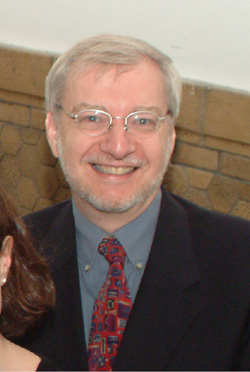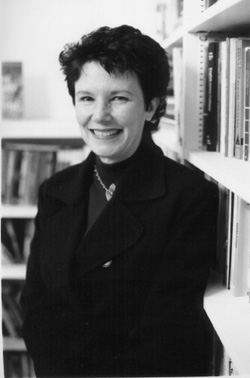Filed Under > Research/Publications
Translating Writer's Block Into Writing
A blend of TC's technology and language expertise could help non-native English speaking young writers put pen to paper
“What should I write about?”
It’s a likely complaint from any eighth grader faced with an essay or creative assignment. For the emergent bilingual student who doesn’t speak English, though, making that first move to set pen to paper can be a deal-breaker.
Now two TC faculty members in seemingly disparate areas of the College—Jo Anne Kleifgen of the International and Transcultural Studies department and Charles Kinzer of the Communication, Computing, and Technology in Education (CCTE) program—are working together to improve the academic writing of such emergent bilingual learners. The two are developing a technology-based intervention with a curricular approach to support and increase English Language Learners’ (ELLs’) academic writing through multimodal, web-based software. Their project, STEPS to Literacy: An Integrated Digital Writing Space for English Language Learners, was recently awarded a three-year, $1.5 million dollar grant from the Institute of Education Sciences (IES), a division of the U.S. Department of Education.
“Our work is based on real need,” says Kleifgen, Professor of Linguistics and Education. “There are lots of children whose home language is different from English who aren’t succeeding academically.” For example, among eighth graders who speak English as a second language—the demographic Kinzer and Kleifgen are focusing on—only 4 percent are proficient readers. Approximately 75 percent of this population is Spanish-speaking.
Kleifgen notes, “Most emergent bilingual students come from poor families and urban areas—there is a real need for intervention.”
“A huge component of academic writing is finding relevant, disparate sources and synthesizing the material in meaningful ways,” Kinzer says. “Students have to structure it logically and create an academic argument.”
To aid in this process, Kleifgen and Kinzer use a framework called “STEPS + G,” co-developed earlier by Kinzer (then at Vanderbilt University
More specifically, the “STEPS + G” framework helps students grapple with that painful question, what to write about, and the software additionally addresses issues of synthesis and the mechanics of writing. For example, in a curriculum on the Civil Rights movement, students are encouraged to consider applying all of the “STEPS + G” elements as they work in the Web-based learning space. The space includes pictures from the era, such as images of Rosa Parks and Martin Luther King, Jr., as well as other Civil Rights-themed materials, original audio and transcripts of King’s speeches (in English and Spanish), and materials about civil rights from various geographic regions of the country. As all transcribed materials are available in English and Spanish, students can use their native language resources to grasp concepts, form ideas, and create notes and drafts, before ultimately writing in English.
“Once students start to do research,” Kinzer says, “the issue of having nothing to write about goes away.”
The roots of the collaboration between Kinzer and Kleifgen go back a few years, when students taking courses with each of them observed that both were interested in language and technology. (Kleifgen has, in fact, been teaching a course in the CCTE program since the late 1980s.) Soon after, they applied for—and received—a grant from the Kellogg Foundation to research their unique curricular approach at a Bronx middle school.
In 2005, Kleifgen and Kinzer ran a year-long pilot program in the school, where students and teachers were able to use a Web-based learning space to improve writing skills, an area in which there had been relatively little focus and study. They chose to work with eighth graders because the New York City Department of Education annually tests this age group on writing at the end of the school year.
During the first phase of IES funding, Kinzer and Kleifgen will use information from the pilot program to expand and refine the design of their program. This spring, they hope to return to the same Bronx school, to develop the new Web space. In addition to working with teachers and students in the classroom, they will also convene a group of 10 “student consultants,” who will help determine the accessibility and usefulness of the curricular approach.
During the second year of funding, Kleifgen and Kinzer will expand their research settings and resources, as well as continue to stay current with technological trends as they become relevant to the development of the project. In the third year, they will incorporate a science curriculum, continue to increase the research settings, and produce training materials for teachers.
Ultimately, Kinzer and Kleifgen are striving to build a culturally sensitive learning space that will be beneficial for the students in their project and beyond. They hope to emerge with evidence that their method shows promise. They also hope to have a “usable system” in place that can be replicated and expanded to support learning across disciplines.
There are institutions where faculty members from different home departments might have found it difficult to find each other and work together. In this instance, though, Kleifgen and Kinzer both say that coming from different academic backgrounds has enriched their collaboration and benefited students.
“Fortunately, at TC,” Kleifgen says, “if you want to engage in this kind of collaborative work, you can find a way.”
Published Thursday, Feb. 4, 2010

